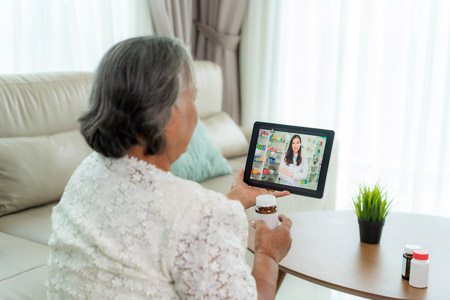


Strategies for Implementing Patient-Centered Care in Your Pharmacy
Independent pharmacies are an integral part of local communities. They’ve modeled their practices to truly serve patients — and a big part of delivering that level of care comes from patient-centered practices.
Implementing these patient-centered care practices in a pharmacy setting is a crucial step toward enhancing outcomes and patient satisfaction.
What is patient-centered care? It’s a form of delivering healthcare that stems from integrated care, which is a way to coordinate health services to better address a patient’s physical, mental, behavioral, and social needs.
The Centers for Medicare & Medicaid Services defines patient-centered care more precisely as “integrated health care services delivered in a setting and manner that is responsive to individuals and their goals, values, and preferences, in a system that supports good provider-patient communication and empowers individuals receiving care and providers to make effective care plans together.”
Does that sound exactly like what you want to deliver to your patients? Keep reading on to learn about some effective strategies for implementing patient-centered care in your pharmacy.
Build Strong Patient Relationships In-Pharmacy
Developing a rapport with patients is the cornerstone of patient-centered care. Take the time to get to know your patients, their medical histories, and their individual needs. This can be achieved through regular, meaningful interactions, where patients feel heard and valued. Personalized greetings, remembering patient names, and following up on previous conversations can significantly enhance the patient-pharmacist relationship.
While all of this is a gold standard for in-pharmacy interactions, it can be difficult to carve out time in your day to prioritize these moments. Pharmacy solutions, like Nimble, have been created to streamline time-consuming activities like collecting payments so that pharmacy owners and staff can spend more time communicating with patients and building relationships.
Empower Patients Through Education
Educating patients about their medications, conditions, and overall health empowers them to take a more active role in their care. Provide clear, understandable information about the benefits and potential side effects of medications during your consultations, and be sure to communicate back any concerns or notes to patients’ doctors.
On top of the consultation conversations you have with patients, you can also utilize visual aids, pamphlets, and digital tools to enhance understanding of their conditions, treatment plans, and medications. All of these assets and conversations can empower your patients — and empowered patients are often more likely to adhere to their treatment plans and engage in healthy behaviors.
Adopt Collaborative Care Practices
Collaboration among healthcare providers is essential for comprehensive patient care. Foster strong relationships with doctors, nurses, and other healthcare professionals to create a seamless care experience for patients.
Actively and responsibly share patient information and work together with physicians to develop and implement care plans that meet the unique needs of each patient. The phrase “it takes a village” definitely applies to adopting patient-centered for your practice!
If you’re curious about how Nimble can help you get more time back and unlock new revenue streams for your pharmacy, so you can invest in patient-centered care, talk with our team of experts, today.



















.jpg)





















.jpg)

















.jpg)


























.jpg)
.jpg)
.jpg)













